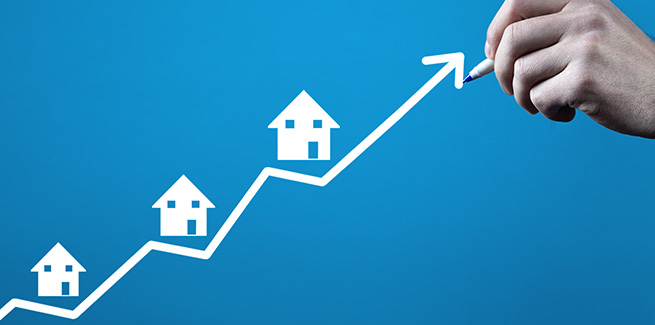New figures from the Australian Bureau of Statistics have shown total household wealth rose by 5.8 per cent or $735 billion in the June quarter – with residential property assets contributing 4.5 percentage points of the quarterly growth.
Superannuation balances and directly shares followed, at 1.1 percentage points and 0.3 percentage points respectively.
Wealth per capita had risen to a record high of $522,032.
ABS head of finance and wealth Katherine Keenan commented residential property prices had recorded their strongest quarterly growth on record, of 6.7 per cent.
Additionally, non-financial assets owned by households had increased in value by 6.4 per cent, or $782.2 billion. There had been a $576.5 billion rise in land and dwellings.
“The strong property price growth reflected record low interest rates, rising consumer confidence and demand being greater than the levels of housing stock on the market,” Ms Keenan said.
Demand for credit came to $78.6 billion, a rise of $25.5 billion over the quarter, of which households borrowed $45.1 billion.
Household demand for credit was the strongest it had been since the June quarter in 2007, with most consumers chasing new housing loans amid the heightened property market.
There was a $38 billion rise in housing loans and a $8.7 billion increase in unincorporated business loans, which drove an overall 1.8 per cent or $8.7 billion growth in household liabilities.
Of the new housing loans, the bulk ($31.9 billion worth) had been owner-occupier, compared to $6 billion for investors.
Meanwhile, private non-financial corporations borrowed $13.3 billion, although the bulk of funding came from equity raising.
Meanwhile, the deposit assets of banks with the Reserve Bank of Australia (RBA) increased to $341.8 billion, as the central bank injected further liquidity into the financial system, in line with its monetary policy goals.
The liquidity helped the quarterly growth of $26 billion, or 1 per cent, in the banks’ loan assets.
“Growth in owner occupier loan balances was the strongest in five years and consistent with ABS seasonally adjusted owner occupied loan commitments data, which reached new highs over the first six months of 2021,” Ms Keenan said.
Deposit accounts with banks grew by $45.1 billion, or 1.7 per cent to $2.7 billion.
The ABS noted that for the first time since the onset of the pandemic, private non-financial corporations had driven the rise in deposits, keeping them steady through April and May before increasing them in June as lockdowns began in NSW.
Households meanwhile saw their weakest increase in deposits in two years, due to increased household spending pre-lockdown.
[Related: RBA rings alarm on high debt levels]

